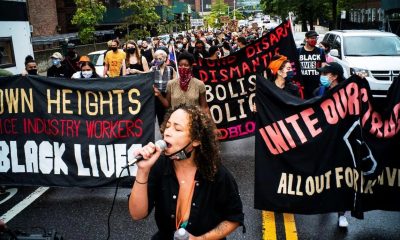Politics
Canada’s NDP Leader Jagmeet Singh Has Destroyed Jack Layton’s Legacy
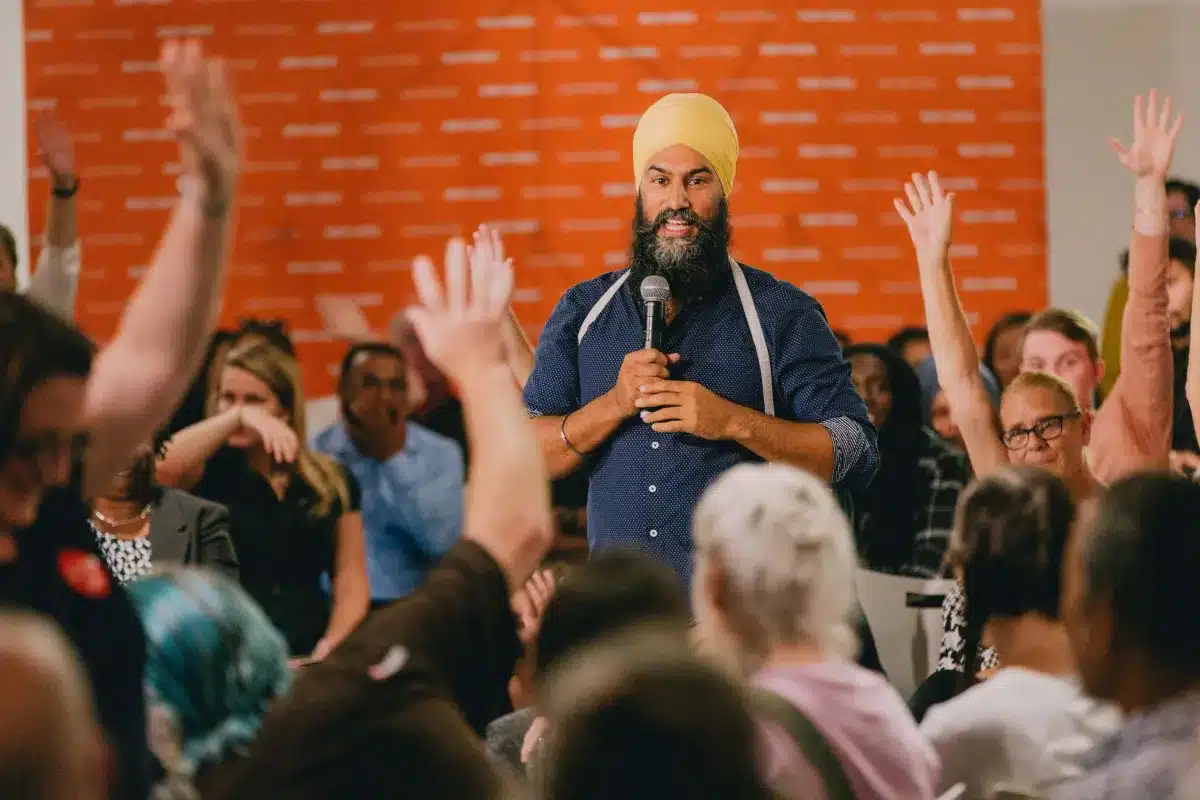
Former NDP leader Jack Layton, who had a genuine relationship with a broad cross-section of Canadians, led his party to its largest electoral victory ever in 2011, securing official opposition status. Since then, things have largely gone south.
Looking at today’s New Democrats, Layton’s broad appeal based on sincerity, friendliness, and a pleasant demeanor has been replaced with a more narrow one centered on divisive identity politics.
Jagmeet Singh, who took over the party’s leadership following Tom Mulcair’s ouster at the 2016 national convention, has unfortunately led the NDP down an ideological and electoral dead end.
According to Ryan Painter, a former NDP executive, under Singh’s leadership, the NDP has been all but annihilated in Quebec, losing 15 of its 16 seats, and even in the prairies, the party’s origin.
Under Singh, the NDP has become almost exclusively an urban party, the result of a leader who prioritizes the interests of individuals on university campuses and in white-collar government offices.
While balancing identity politics and the effort to advance progress for all Canadians has always been a challenge within the NDP, Layton understood how to appeal to activists without allowing them to co-opt the party, avoiding the virulently toxic wedge politics that the NDP now embraces.
Layton Fought for the Middle Class
Painter stated that Jack Layton recognized that realistic ideas may benefit middle-class Canadians. Whether it was his push to revitalize the automotive sector by investing billions of dollars in environmentally friendly cars and trucks made in Canada, or his commitment to working with the provinces to strengthen and eventually double the pension system.
Layton saw his job as fighting to build and strengthen the middle class. Not so for Singh, who showed no enthusiasm for a stronger middle class.
Instead, Jagmeet Singh focuses his attention on populist attacks on the “ultra-rich” and large corporations such as grocery chains, frequently targeting Loblaws and its CEO, Galen Weston.
It is important to note that Singh’s brother, Gurratan Singh, former Ontario NDP MPP, works for a firm that lobbies for Loblaws competitor Metro. Painter points out.
Millennials and younger voters are clearly anxious for at least one Canadian leader to acknowledge their growing sense of pessimism. However, Singh’s words of support and understanding concerning cost ring hollow coming from someone who enjoys pricey clothes, Rolex watches, and Versace bags.
A recent Abacus Data poll found that people aged 30-44—the elder millennial cohort, which generally favors the NDP—have all but abandoned the party.
Instead, they largely back Pierre Poilieve and the Conservatives. Why? Simple: Singh is providing nothing tangible for millennial and working-class voters to latch upon.
According to Painter, Singh has squandered Layton’s goodwill and transformed the NDP from the nation’s so-called conscience to the epitome of irrelevance.
Jagmeet Singh is Canada’s most expensive NDP MP
Meanwhile, according to the National Post, Jagmeet Singh has spent more than $500,000 on running his constituency office during the first nine months of 2024.
NDP Leader Jagmeet Singh is now the highest-spending individual member of Parliament in the House of Commons, with Conservative Leader Pierre Poilievre ranking lowest.
The most recent MP spending numbers were issued in late March, and they show that Singh spent $533,533 in his position as MP for Burnaby South for the first three quarters of the previous fiscal year (April 1, 2023 to December 31, 2023).
During the same time period, Poilievre claimed $143,201 in costs relating to his work as MP for the Carleton riding, which was nearly one-fourth of Singh’s total.
Poilievre was also one of just a few MPs whose constituency costs did not include any funds for “travel” or “hospitality.”
To be true, Poilievre and Singh have significantly larger annual expenses as party leaders. However, in terms of expenses incurred as individual members of Parliament, Singh charged the most while Poilievre charged the least.
Singh’s seat is 4,000 kilometers west of Parliament Hill, but Poilievre represents an Ottawa suburb, thus it stands to reason that their travel expenses would be vastly different.
Singh’s outrageous expenses
Singh, while being born in Scarborough, Ont., and having previously represented Toronto-area ridings as a member of Ontario’s provincial parliament, chose to run in Burnaby South in the 2019 election and has represented the city near Vancouver since.
In 2023, Singh routinely rated among the top ten MPs in terms of travel expenses.
Between July 1 and September 30, his travel expenses of $65,836.58 were nearly identical to those of Lori Idlout ($66,181.59), a perennial high-spender in parliamentary travel due to the fact that she represents Nunavut.
Singh’s charges for paying salaries to employees working in his offices are roughly twice those of Poilievre. Singh’s salary costs were $63,790.64 in the most recent quarter, compared to Poilievre’s expense of $33,808.68.
In the second quarter (July 1 to September 30), the spread nearly tripled: $94,051.82 to $33,751.19.
Singh would also quadruple Poilievre’s constituency budget for “contracts,” which include incidental office expenses such as rent, advertising, and janitorial services.
Over three months, the NDP leader earned $45,535.99 to Poilievre’s $15,510.25. Poilievre’s whole budget for that period was nearly identical to Singh’s spending on the $4,500/month lease for his Kingsway constituency office.
Poilievre’s advantage over Singh
Of course, it’s a very different scenario when it comes to the expenses that Poilievre and Singh incur as party leaders. Those expenses are counted separately in their capacity as “presiding officers” of the House of Commons.
Approximately two dozen MPs, including the prime minister, speaker, and party whips, are paid budgets in addition to their MP expenses.
In these data, Poilievre has a significant advantage over Singh.
Poilievre’s expenses as “Leader of the Official Opposition” cost taxpayers around $1.1 million in the last three months of 2023, with an additional $35,463 going to the upkeep of Stornoway, Poilievre’s official residence.
The prime minister, the official opposition leader, and the Speaker of the House of Commons all have official residences.
During the same year, Singh’s costs as leader of the “Other Opposition Party” totaled only $330,994.71.
Despite the fact that Poilievre represents a caucus of 118 to Singh’s 24, the Conservative leader’s per-member cost to taxpayers remains lower.
This advertising is not yet loaded, but your article continues below.
In terms of prime ministerial expenses, while Justin Trudeau is well-known for his exorbitant travel costs, the most recent numbers show that his Montreal constituency office is also one of the most cost-effective in the country.
In one quarter, Trudeau’s Papineau riding was one of the few offices, along from Carleton, that had no travel or hospitality expenses.
By Geoff Thomas
Politics
Canada’s Population Explosion Under Trudeau Triggers Housing Shortage
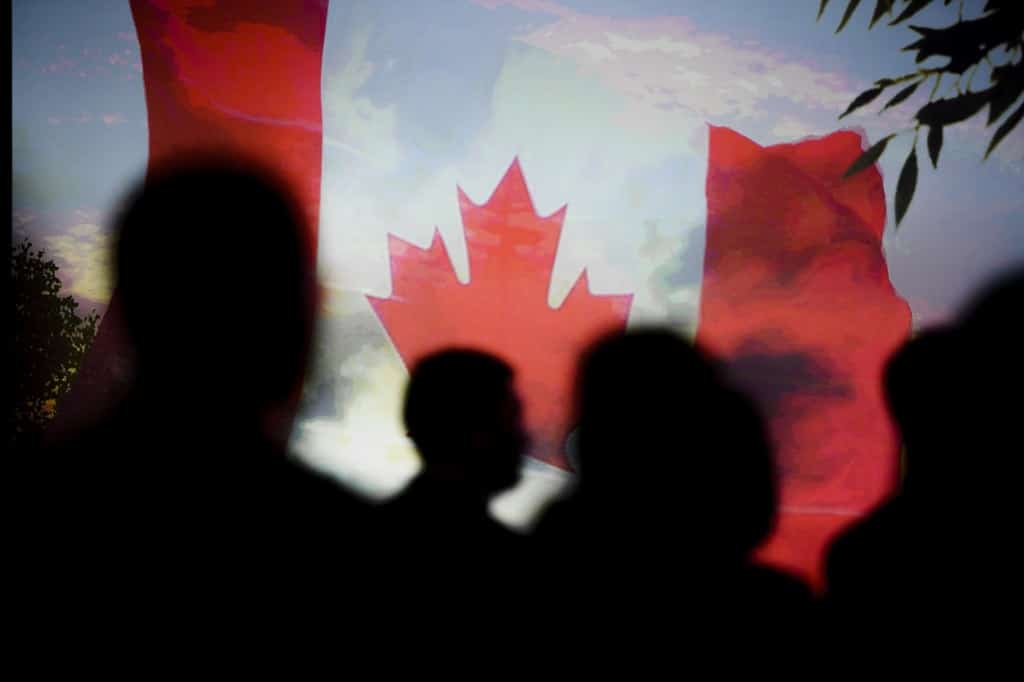
The Trudeau government declared on March 21, 2024, that it would accept fewer temporary residents due to the difficulty of assimilating so many newcomers so quickly. However, population growth appears to be accelerating in 2024.
Statistics Canada’s Labour Force Survey, the population aged 15 and over increased by approximately 411,000 in the first four months of the year, representing a than 50% increase over the four-month growth in early 2023.
This new acceleration was the focus of a recent research paper by Stéfane Marion, chief economist at the National Bank of Canada. “The demographic shock is getting worse in Canada,” he told Canada’s Globe and Mail.
Canada is seeing its strongest population expansion in decades, thanks almost exclusively to foreign migration, which includes the entrance of temporary workers and students. The population increased by about 1.3 million last year, or 3.2%, the fastest rate since the late 1950s.
Every month, tens of thousands of households participate in Statistics Canada’s labour survey. While the government includes population data in its monthly jobs report, they are not official estimates. Statscan publishes a different population report on a quarterly basis; the next edition is due June 19.
Nonetheless, these data indicate that Canada’s economy has remained strong to begin the year, which could complicate the federal government’s efforts to limit migration.
For the first time, the Trudeau government will impose limits on temporary residents beginning this fall. The government aims to reduce this group to 5% of the total population during the next three years; at latest count, they accounted for 6.5%.
Given those plans, “it would seem that many people have decided to come to Canada earlier,” Mr. Marion said, stressing that housing affordability may worsen in the short term.
Several analysts have predicted that Canada’s population growth will eventually decrease to approximately 1% when these new laws take effect.
Housing Affordability in Canada
Meanwhile, Stéfane Marion fears that housing affordability difficulties will increase amid another surge in immigration numbers.
“Demographic shock is worsening in Canada. The working-age population (aged 15 and over) increased by more than 100,000 in April, bringing the total to more than 410,000 after four months in 2024.
According to today’s Hot Chart, this is a significant acceleration (+47%) above the 278,000 increase seen in the first four months of 2023. Greater Toronto, where population growth hit a record 107,000 at the start of the year, has accelerated by 66% compared to 2023.
Greater Montreal and Greater Vancouver have not lagged behind since the beginning of 2024, with growth more than doubling that recorded in 2023.
With Canada’s Minister of Immigration, Refugees, and Citizenship, Marc Miller, announcing plans to curb immigration in 2025, it appears that many people have decided to come to Canada sooner.
Housing affordability issues could increase in the coming quarters, as we approach another record year of population growth.
RBC indicates a loss of affordability in Canada
RBC’s aggregate affordability score for Canada increased by 2.8 percentage points to 62.5% as mortgage rates rose and property prices rose somewhat. (An increase in the measure indicates a loss of affordability.) This reversed a little improvement in the second quarter.
The issue is particularly acute in Vancouver, Victoria, and Toronto, where property ownership is extremely expensive. Ottawa, Montreal, and Halifax also confront difficult affordability issues.
Last quarter, purchasers’ already bad situation deteriorated even further. A typical household required to set aside an additional 4.4 percentage points of its income to afford the costs of owning an average home at current prices and interest rates.
In fact, the entire income of that (median) household was insufficient, with RBC’s aggregate affordability metric coming in at an amazing 102.6%. The only practical choice for most ordinary consumers remains a less expensive condo apartment, which is still out of reach for many.
Home purchase activity has cooled again after unexpectedly rebounding last spring. Furthermore, prices are beginning to fall from their summer highs. In the face of significant affordability pressures, we believe the downward trend may accelerate in the near term.
Keywords: Canada News, Canada Population
Politics
Trudeau Liberals Electoral Chances are as Good as Dead
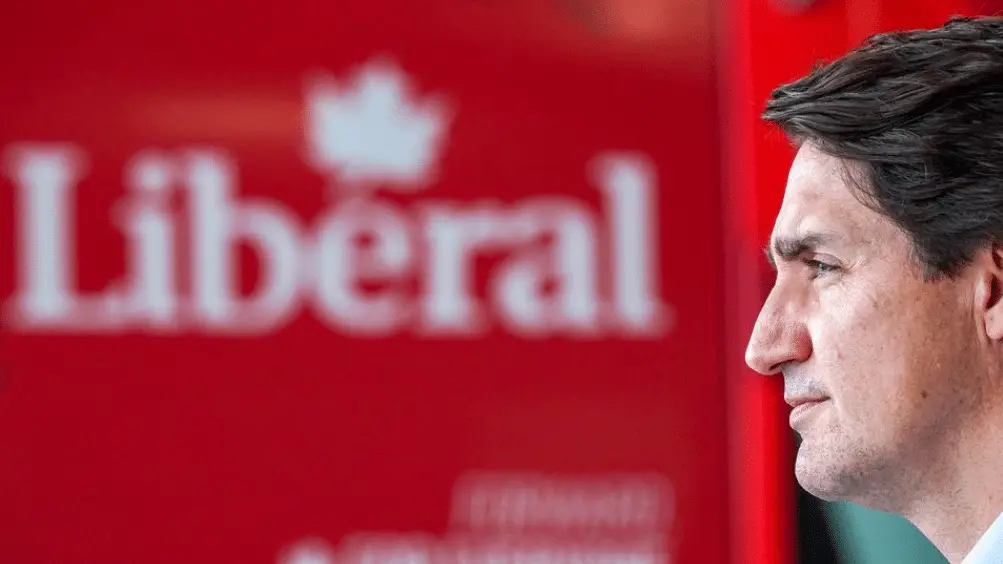
Justin Trudeau’s Liberal Party’s popularity has plummeted to record lows in recent polls. Scandals and his carbon tax weakened Trudeau’s support after years of support. Many election Analysts belive Justin Trudeau and his Liberals will not survive the next election.
The newest Angus Reid survey shows the Conservatives leading nationwide, with Trudeau and his Liberals losing support in most provinces, especially Ontario and Quebec. Analysts say Trudeau’s leadership fatigue, unhappiness over inflation, ridiculous carbon tax, and continual policy flip-flopping are driving voters away.
Trudeau’s carbon tax is unpopular across Canada. Many Canadians hate its higher prices for homes and businesses.
Critics say it unfairly targets energy, threatening jobs and prosperity. Skeptics believe the tax fails to solve global climate challenges despite claims it will reduce emissions.
Provincial governments like Alberta passionately oppose federal intrusion. The carbon tax still divides society.
Steven Guilbeault, Trudeau’s Environment and Climate Change Minister, has lost support from neutral public and provincial governments and the powerful climate action lobby.
Don Braid of the Calgary Herald says Chickens with their heads cut off run around in circles. In politics, the federal Liberals are starting to exhibit this postmortem behaviour.
Environment and Climate Change Minister Steven Guilbeault, the core cabinet fowl who said no new roads should be built in Canada, continues to press his climate extremism.
“The result is political fiasco.”
Alberta and Saskatchewan have always been bitterly opposed to many measures. But Guilbeault is now losing support from the public, provincial governments that once were at least neutral and, crucially, the powerful climate action lobby.
The disasters are self-inflicted. Trudeau and Guilbeault stuck to the carbon tax even after the policy’s disastrous deflation by the “carve out” for home heating oil, a benefit mainly to Atlantic Canada.
Their faux-tough response — nobody else gets that, dammit! — actually cost farmers a break that had been planned, but suddenly looked like another exemption.
The carbon tax, revealed as a purely political tool, is ripe for axing by a potential new leader like Mark Carney. Even New Democrats have argued that the tax should exit, stage left.
Now, Guilbeault has introduced amendments to the Impact Assessment Act, allegedly bringing it into line with the Supreme Court ruling that found the law seriously intrudes on powers rightly belonging to the provinces.
Trudeau’s power grabs shot down
Guilbeault has never acknowledged this was a defeat. He treats the ruling as a simple policy problem rather than a 5-2 thumping by judges not usually known for hostility to federal power grabs.
Alberta was predictably furious about the amendments. Premier Danielle Smith always said Guilbeault would make a gesture and proceed as usual, forcing yet another court challenge.
“When you look at the unconstitutionality of the first draft, you can’t just make tweaks and bring this in line with the Constitution,” says Rebecca Schulz, Alberta’s minister for environment and protected areas.
“That’s really the issue here. Minister Guilbeault still has the ability to involve himself in projects that are within provincial jurisdiction.
“In the end, this piece of legislation remains unconstitutional. We are going to be taking this back to court and I’m confident in our position, because their changes don’t actually address the issues that we’ve raised.”
Trudeau’s middle ground game not working
The Impact Assessment Agency, the powerful regulatory body that oversees all this, said in a statement: “No decisions to designate projects will be taken. Consideration of any new designation requests will only resume, as appropriate, once amended legislation is in force.”
Most striking is the fury from the climate action lobby toward Guilbeault’s amendments.
“Overall, the bill is a complete federal abdication to address proposed high-carbon projects such as in situ oil mines,” Steven Hazell, a retired environment lawyer and federal regulator told the National Observer, Canada’s best chronicler of climate stories and policy.
Green party Leader Elizabeth May said the government was “erring on the side of stupidity.” May sees the court decision as an opportunity to go further with legislation, not retreat to meet demands of provincial jurisdiction.
World
China And Russia Reaffirm Their Close Ties As Moscow Presses Its Offensive In Ukraine
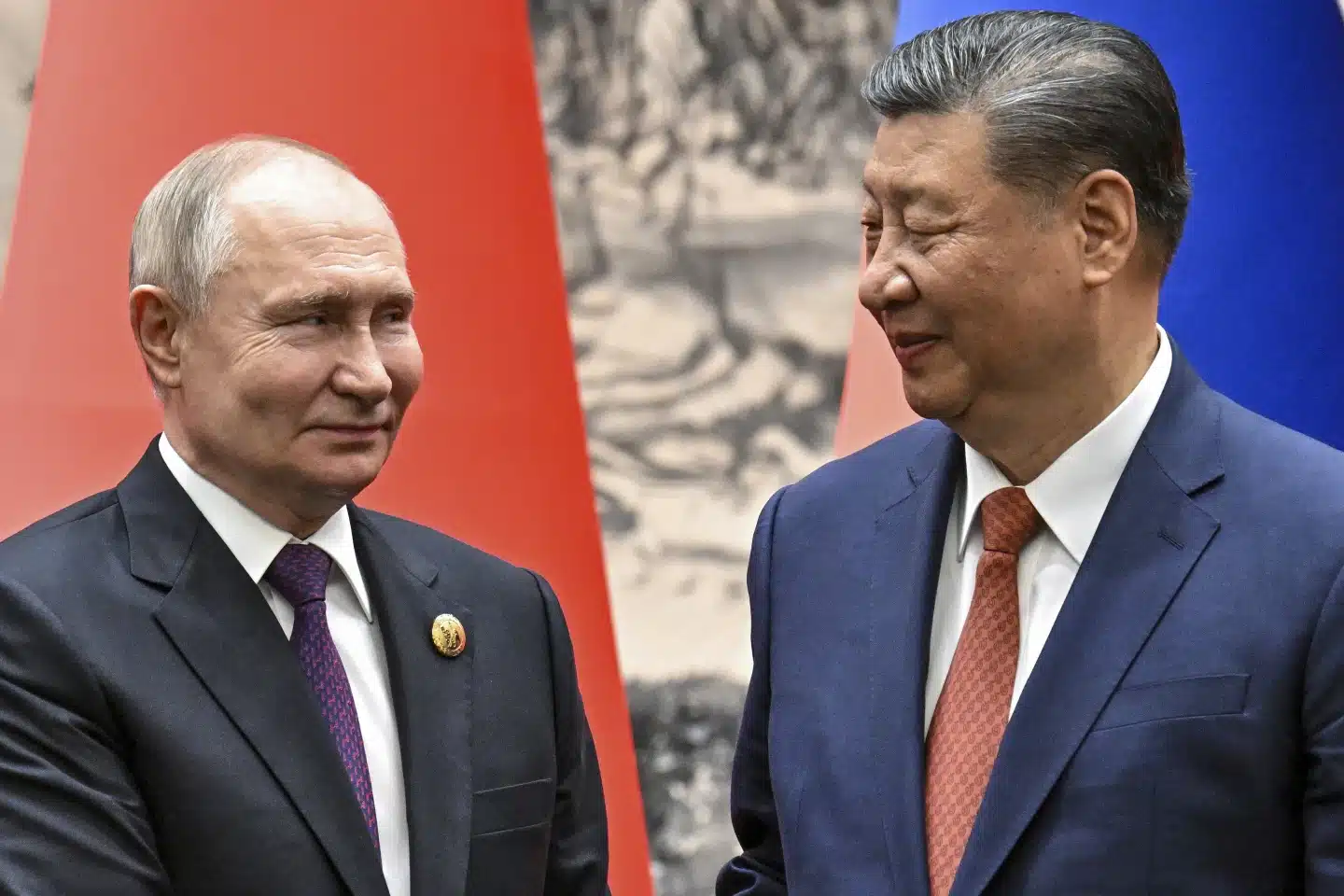
BEIJING — On Thursday, Russian President Vladimir Putin and Chinese President Xi Jinping reiterated their “no-limits” friendship, which has expanded as both countries face mounting tensions with the West, and blasted US military deployments in Asia and the Pacific.
At their summit in Beijing, Putin hailed Xi for China’s recommendations to settle the conflict in Ukraine, which Ukraine and its Western allies have rejected as mostly adopting the Kremlin’s line.
Putin’s two-day state visit to one of his biggest allies and commercial partners comes as Russian forces launch an operation in northeastern Ukraine’s Kharkiv region, marking the most serious border incursion since the full-scale invasion began on February 24, 2022.
China claims to be impartial in the crisis, but it has supported the Kremlin’s accusations that the West led Russia into attacking Ukraine, and it continues to supply vital components required by Moscow for weapons manufacture.
AP – VOR News Image
China And Russia Reaffirm Their Close Ties As Moscow Presses Its Offensive In Ukraine
China, which has not condemned the invasion, suggested a broad-based peace plan in 2023, calling for a cease-fire and direct talks between Moscow and Kyiv. Both Ukraine and the West rejected the idea because it did not call on Russia to vacate Ukraine’s occupied territories.
China also lent a verbal nod to Russia’s narrative about Nazism in Ukraine, with a joint statement issued Thursday saying Moscow and Beijing should protect the post-World War II order and “severely condemn the glorification of or even attempts to revive Nazism and militarism.”
Putin has claimed the “denazification” of Ukraine as a primary purpose of the military action, falsely referring to Ukrainian President Volodymyr Zelenskyy’s government as neo-Nazis.
The mostly symbolic and ceremonial visit emphasized cooperation between two countries facing challenges in their relations with the United States and Europe.
“Both sides want to show that despite what is happening globally, despite the pressure that both sides are facing from the U.S., both sides are not about to turn their backs on each other anytime soon,” said Hoo Tiang Boon, a Chinese foreign policy researcher at Singapore’s Nanyang Technological University.
While Putin and Xi stated they wanted to stop the war, they made no new ideas in their public remarks.
“China hopes for the early return of Europe to peace and stability and will continue to play a constructive role toward this,” Xi said in prepared remarks to the media in Beijing’s Great Hall of the People. His statements echoed China’s overarching peace initiative.
Earlier in the day, Putin was greeted in Tiananmen Square with military fanfare and cannon fire.
On the eve of his visit, Putin stated that China’s proposal may “lay the groundwork for a political and diplomatic process that would take Russia’s security concerns into account and contribute to achieving long-term and sustainable peace.”
Zelenskyy has stated that any negotiations must entail the restoration of Ukraine’s territorial integrity, the departure of Russian soldiers, the release of all captives, a tribunal for those responsible for the assault, and security assurances for Ukraine.
AP – VOR news Image
China And Russia Reaffirm Their Close Ties As Moscow Presses Its Offensive In Ukraine
Putin said he would brief Xi on the situation in Ukraine, adding, “We appreciate the initiative of our Chinese colleagues and friends to regulate the situation.”
Following Russia’s latest attack in Ukraine last week, the war has reached a crucial point as Ukraine’s depleted military awaits new supplies of anti-aircraft missiles and artillery rounds from the United States, which have been delayed for months.
China and Russia’s joint statement also harshly slammed US foreign policy, citing US-formed alliances as having a “Cold War mentality.”
“Both sides expressed serious concern about the consequences caused to the strategic stability of the Asia-Pacific region by AUKUS,” according to the statement, referring to the acronym for Australia, the United Kingdom, and the United States.
China and Russia have accused the United States of installing land-based intermediate-range missile systems in the Asia-Pacific region under the guise of joint drills with allies. They claimed that the United States’ operations in Asia were “changing the balance of power” and “endangering the security of all countries in the region.”
The united declaration underscored China’s support for Russia.
“There’s so much Chinese falling over themselves to give Russia face and respect without saying anything specific, or committing to anything,” said Susan Thornton, a former diplomat and senior fellow at Yale Law School’s Paul Tsai China Center.
The meeting was another endorsement of China and Russia’s amicable “no limits” friendship, which they signed in 2022, just before Moscow invaded Ukraine.
Since then, Russia has been increasingly economically dependent on China since Western sanctions have limited its access to most of the global commercial system. China’s expanding commerce with Russia, which reached $240 billion last year, has helped the country buffer some of the worst effects of sanctions.
Moscow has transferred most of its energy exports to China and relied on Chinese enterprises to purchase high-tech components for Russian defense sectors to avoid Western sanctions.
AP – VOR News Image
China And Russia Reaffirm Their Close Ties As Moscow Presses Its Offensive In Ukraine
“I and President Putin agree we should actively look for convergence points of the interests of both countries, to develop each’s advantages, and deepen integration of interests, realizing each others’ achievements,” added Xi.
Xi congratulated Putin on the start of his fifth term in office and commemorated the 75th anniversary of diplomatic relations between the former Soviet Union and the People’s Republic of China, which were formed after a civil war in 1949. In the March election, Putin eliminated all significant political opponents and faced no serious threat. He, like Xi, has not spelled out a succession strategy.
“In a famous song of that time, 75 years ago — it is still performed today — there is a phrase that has become a catchphrase: ‘Russians and Chinese are brothers forever,'” Putin stated.
During the war, Russia and China expanded their military ties. In recent years, they have conducted several cooperative war simulations, including naval drills and long-range bomber patrols over the Sea of Japan and the East China Sea. Russian and Chinese ground forces have also moved to the other country’s territory to conduct joint training.
China continues to be a major market for Russian military hardware, while the country’s defense industry is rapidly developing, including the production of aircraft carriers and nuclear submarines.
Putin has already stated that Russia has shared highly sensitive military technologies with China, considerably improving its defense strength.
SOURCE -(AP)
-
Sports5 months ago
Saints’ Aggressive Play-Calling Ends Up Coming Back To Hurt Them In Loss To Rams
-
Business5 months ago
Nike Says It Will Cut $2 Billion In Costs In A Major Warning For Consumers
-
Business5 months ago
Federal Court Revives Lawsuit Against Nirvana Over 1991 ‘Nevermind’ Naked Baby Album Cover
-
News5 months ago
The Rise of Woke Ideology in Western Culture
-
Business5 months ago
Wayfair CEO: Employees Need To Work Longer Hours, After Laying Off 5% Off The Company
-
Learning4 days ago
Exploring TVA Nouvelles Quebec’s Premier News Source








































